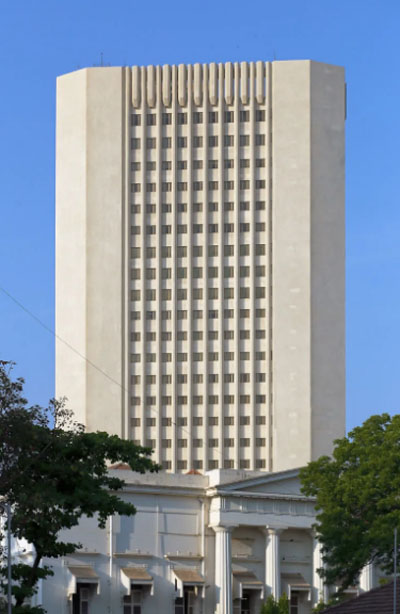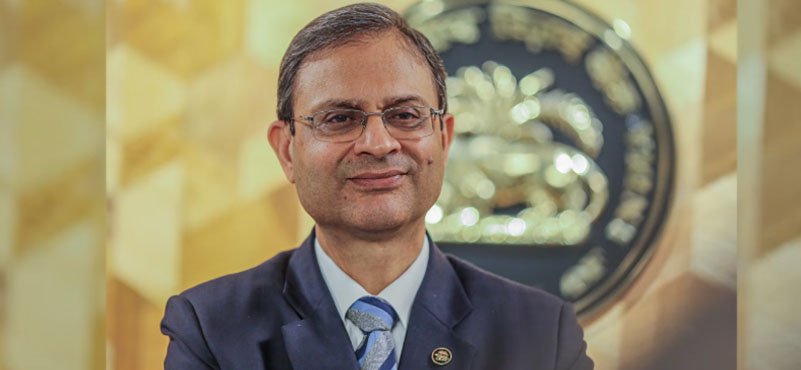The October 2025 review carries special weight, coming after a period of aggressive monetary easing. Since February 2025, the RBI has cut the repo rate by 100 basis points and the CRR by another 100 basis points in phases. These moves injected ample liquidity, lowered borrowing costs, and lifted credit demand. The October policy will therefore focus less on aggressive easing and more on sustaining growth, anchoring inflation expectations, and safeguarding financial stability in a volatile global landscape.
Global Backdrop-Lexicon of Change
The global economy remains fragile, strained by trade frictions, geopolitical tensions, and weak investor sentiment. The IMF’s April 2025 World Economic Outlook projects global growth at 2.8% in 2025 and 3% in 2026, down from earlier forecasts of 3.3% for both years. Growth in advanced economies is expected to slow to 1.4% in 2025, far below the pre-pandemic average.
 At the heart of global uncertainty lies the U.S. tariff shock, with the WTO estimating a 1.5% hit to global trade in 2025. As Naomi Klein’s title aptly suggests, “This Changes Everything.”
At the heart of global uncertainty lies the U.S. tariff shock, with the WTO estimating a 1.5% hit to global trade in 2025. As Naomi Klein’s title aptly suggests, “This Changes Everything.”
All countries are interlinked and interdependent in today’s global order. Hence, transformations in economic relations, global deceleration, and geopolitical flashpoints—from the Middle East to the Russia–Ukraine war—are amplifying supply-chain shifts, investor risk aversion, and currency swings.
Geopolitical tensions, supply chain realignments, trade protectionism, and fragile investor sentiment can lead to increased market volatility, currency depreciation, and reduced capital inflows as foreign investors become more risk-averse, leading to a scramble for “safe-havens” like the US Dollar, Gold, and Silver.
The U.S. Dollar Index has softened below 97.50, reflecting growing investor concerns and possible shifts in global capital flows. Volatility in technology and semiconductor stocks further highlights the fragile sentiment in a tariff-driven market.
Further, China’s pursuit of technological independence, intensified concerns over the fragmentation of the semiconductor ecosystem, and the geopolitics of artificial intelligence (AI) are reshaping trade and investment flows. Energy markets remain volatile amid OPEC+ production strategies and evolving dynamics in renewables, exacerbating the turbulence in global capital and energy markets. Currency fluctuations, especially the recent strengthening of the US dollar, have also affected emerging markets’ external balances.
While global inflation is moderating, sticky core inflation in advanced economies and fragile capital flows keep volatility elevated, complicating the policy stance of emerging markets, including India.
Domestic Economy-Syntax of Transformation
India remains among the world’s fastest-growing economies but faces cooling momentum. GDP slowed to 6.5% in FY25, the weakest in four years, due to muted consumption and sluggish private investment. Encouragingly, Q1 FY26 rebounded to 6.7%, driven by services, manufacturing, and public spending.
Services remain the growth anchor, supported by digital adoption and domestic demand. Manufacturing shows an incipient revival, aided by lower input costs and easier credit.
The GDP growth could be dented because of Trump’s tariffs by 20-25 basis points. However, India, unlike China, is largely a domestically driven economy. We need to consider shifting geopolitical settings, including the RIC (Russia-India-China) grouping and its wider implications for global economic power structures and economic alliances. There are also persisting challenges of agriculture (headwinds from erratic monsoon patterns, localized droughts, pest infestations, and rural distress), private consumption (hampered by uneven income growth and job market uncertainties), and exports (sluggish demand, especially from advanced economies).
Despite these pressures, the IMF projects India’s GDP growth at 7% in FY26, while the RBI pegs it slightly lower at 6.5%, reflecting cautious optimism about domestic resilience.
Inflation Dynamics
Inflation has softened significantly. CPI fell to 2.8% in May 2025, the lowest in six years, largely due to cheaper vegetables and a favorable base. Core inflation, though higher, is on a declining path.
For FY26, inflation is expected to average 3.7%, within the RBI’s 2–6% tolerance band. Food inflation remains benign, assuming stable monsoons and supply chains, though oil shocks and climate risks remain potential disruptors.
This benign environment gives the RBI space to support growth. Yet, risks such as a stronger U.S. dollar, costlier energy imports, and weak rural consumption complicate the growth–inflation balance.
Fiscal and Monetary Policy Alignment
The Union Government continues its capex-heavy fiscal strategy, pushing infrastructure, digital inclusion, and welfare programs, while aiming for a fiscal deficit of 4.5% of GDP by FY26.
The GST overhaul (September 2025)—consolidating rates into 5% and 18%, with a 40% sin bracket—could lower inflation by up to 1.1 percentage points, boost compliance, and yield a net fiscal impact of ₹22,000–24,000 crore. Its success hinges on effective price pass-through and Centre–State coordination.
Monetary and fiscal synergy will be crucial: fiscal expansion needs affordable financing, while the RBI must safeguard against inflationary spillovers.
Liquidity and Transmission
The phased 100 bps CRR cut since September has released ₹1.2 lakh crore into the system, with the full ₹2.5 lakh crore impact expected by November. Liquidity conditions are easy, enabling quick transmission through EBLR-linked loans that have lowered EMIs for housing and MSMEs. However, depositors face reduced returns, and the RBI must monitor excess liquidity to prevent asset bubbles.
Policy Outlook
- Repo rate: Likely held steady at 5.5%, though a 25-bps cut cannot be ruled out given sub-2% recent inflation prints. Perceptions differ; assessments vary-a case of too close to call!
- Stance: Expected to remain neutral, balancing growth support with inflation vigilance.
Grammar of Development
- Consolidate growth momentum: Support private capex, MSMEs, and infrastructure through an accommodative but prudent monetary policy.
- Anchor inflation expectations: Revise forecasts lower, but stay alert to food and oil shocks.
- Safeguard financial stability: Monitor liquidity, asset quality, and speculative bubbles in equity and housing markets.
- Strengthen fiscal–monetary synergy: Ensure capex financing without fiscal slippage.
- Navigate global risks: Manage capital flows, currency volatility, and trade spillovers.
- Support rural revival: Channel credit into agriculture and rural consumption to revive consumption and reduce inequality.
Transformed Narrative
The October 2025 policy could mark a likely pause after two successive cuts and substantial liquidity injections. to revive consumption and reduce inequality.
The RBI is expected to pivot toward stability and consolidation rather than fresh stimulus. The overriding priority will be to sustain growth momentum while ensuring inflation stays within target and financial markets remain resilient. With global headwinds and domestic structural constraints, the RBI’s approach will remain data-driven, cautious, and forward-looking.
India’s growth prospects remain bright, provided monetary and fiscal coordination, structural reforms, and external risk management move in tandem.
ABOUT THE AUTHOR
 Dr. Manoranjan Sharma is Chief Economist, Infomerics, India. With a brilliant academic record, he has over 250 publications and six books. His views have been cited in the Associated Press, New York; Dow Jones, New York; International Herald Tribune, New York; Wall Street Journal, New York.
Dr. Manoranjan Sharma is Chief Economist, Infomerics, India. With a brilliant academic record, he has over 250 publications and six books. His views have been cited in the Associated Press, New York; Dow Jones, New York; International Herald Tribune, New York; Wall Street Journal, New York.








